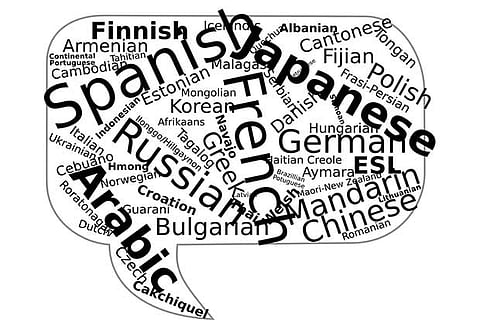

NEW DELHI: In the backdrop of International Mother Language Day observed this week, it makes sense to take stock of local developments surrounding the touchy subject of mother tongue. This month, the Karnataka government tabled a bill mandating the prominent use of Kannada signage on business signboards across the state. The bill, referred to as the Kannada Language Comprehensive Development (Amendment) Bill, 2024, seeks to amend the existing 2022 Act. Per the statement of objects and reasons within the bill, Kannada must occupy 60% of the space on signboards, with placement in the upper half of the name board.
The decision to initiate the ordinance came on the back of violent protests by pro-Kannada groups that targeted businesses in Bengaluru for neglecting the mother language. Last December, a fringe group vandalised many commercial establishments across the city, demanding that signboards dedicate as much as 60% of the visible real estate to Kannada signage. The Bruhat Bengaluru Mahanagara Palike (BBMP) responded by kick-starting a drive to enforce the “60% Kannada” rule for name boards on business concerns. As many as 34,000 notices were issued to non-compliant businesses, with a deadline set for February 28 for compliance.
The knee-jerk reaction of the BBMP led to a comedy of errors being played out on signboards across India’s Silicon Valley. Thanks to translation mistakes, typos, grammatical goof-ups, and the general absurdity of being asked to transpose every possible usage of English into its Kannada equivalent, social media turned into a fertile ground for memes — of railways stations in Karnataka sporting name-boards featuring a station name in as many as five languages, and a potential demand for computer coders who can programme in Kannada. Interestingly, such developments are taking place in a bustling Tier 1 city with a significant migrant population, a majority of whom might not be well-versed in reading Kannada.
The furore surrounding mother languages isn’t limited to the south. This week, the CM of Meghalaya, Conrad K Sangma had informed the assembly that the state government has sent about eight letters to the central government for the inclusion of Khasi and Garo languages in the Eighth Schedule to the Constitution of India. There seems to be no specific or fixed criteria for the inclusion of a language in the Eighth Schedule. But the Centre has not offered any clarification regarding the reasons for the delay in the inclusion of the two languages, which are on the list of 38 languages lying pending with the Ministry of Home Affairs.
Things are on an even keel at home in Tamil Nadu, where Finance Minister Thangam Thennarasu said that one of the seven major pillars forming the bedrock of the state budget includes the Tamil language and culture. The government announced it would translate the Tamil epics Silappathikaram and Manimegalai in other Indian and foreign languages at a cost of Rs 2 crore. Beginning this year, efforts will be made to house translations of important Tamil literary works in the top 100 universities and libraries across the world.
The notion of language must function as a unifying force, not something that exists in a vacuum. And it’s all the more reason for us to ditch rhetoric like Hindi Theriyathu, Poda!
© 2024 All Rights Reserved. Powered by Summ